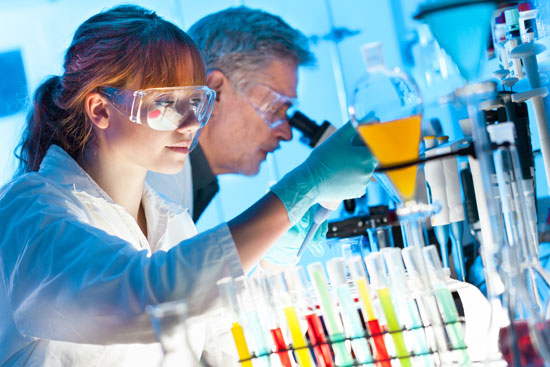Turning Our Backs on the Perfect Solution

The bad news is that the world is facing a severe food crisis. The good news is that we already have the solution. The other bad news, though, is that misunderstanding, misinformation and apocalyptic scaremongering are threatening to block the widespread implementation of this solution.
When an issue generates more conspiracy theories than the deaths of Elvis and JFK combined, rational debate tends to be elusive. Things like balance, reason and facts tend to get elbowed aside by mistrust, hyperbole and inaccuracies. Today, that’s the challenge facing genetically modified crops and crop biotechnology.
Whenever and wherever GM crops are mentioned, the response tends to be hysterical and irrational – and terms like get “Frankenstein Foods” get thrown around with abandon. These terms might make for eye-catching headlines, but they’re entirely meaningless and misleading. Genetic modification has emerged as one of the most contentious issues of the twenty-first century. And the controversy doesn’t look like it’s going to be settled any time soon.

A certain amount of skepticism around GM crops is understandable. People want to know what they’re eating – and the idea that the food they feed their children is being ‘modified’ or manipulated is naturally going to cause some alarm. The thing is, though: there’s nothing new or novel about the modification of crops. We’ve being doing it for thousands of years. Take wheat, for example. It dates back around 10,000 years, but it was originally created through the manipulation of the grains of wild grasses. So much so, in fact, that wheat has lost the ability to disperse its own seeds. Not only was wheat created by human intervention, it can’t survive without human intervention. Odd as it sounds, wheat is the ultimate and original GM crop.
The problem, of course, is that the general public doesn’t generally understand complex scientific principles or biotechnology. And it’s human nature to reject and fear what we don’t understand. However, these fears are unwarranted. Not many technologies can boast a flawless 20-year safety record. And it’s worth remembering that GM crops are subject to far stricter regulations than conventionally produced crops. Since GM foods were first introduced in 1994, there have been thousands of independent scientific studies and tests conducted. Not one of these tests has ever uncovered any reason to suggest that GM technology entails added risk. There is, though, plenty of evidence to suggest the contrary – that GM technology reduces risk. For example, when GM technology was applied to the production of human growth hormone medicines, the principle cause of CJD was eradicated. That’s not an insignificant benefit.
Perhaps the most common criticism of GM crop production is that it leads to increased use of chemical pesticides. Again, though, that’s simply not true. It’s an indisputable fact that the use of pesticides is far less with GM crops. GM crops often have a built-in insecticide that necessarily kills only insects that feed on the crop. Contrast this with conventionally grown crops that are sprayed with insecticide, often clumsily and from a distance. Where does this insecticide go? Well, most of it drifts away or gets blown off course – and the environmental damage is huge. And GM crop production results in significantly less carbon dioxide emissions. So there are environmental benefits to GM crop production too.
Other benefits include higher crop yields, improved food quality, and the ability to engineer crops so that they can better cope with extreme weather conditions. Aside from guaranteeing yield and quality in traditional areas, engineering crops so that they are more tolerant to different weather extremes opens up new areas for food production. GM crops can also be engineered to increase the content of a specific nutrient, which could be massively useful in solving nutrition problems in developing countries. So there are benefits to consumers as well as to producers.
Perhaps it’s time to pose the question to opponents of GM crops and biotechnology, ‘If not GM crop production, what then?’ The population of the earth will have reached nine billion by 2050. And those people are going to have to be fed. Unless food productivity improves dramatically between now and then, that’s going to be very, very difficult. Some commentators reckon there will be a need for almost twice the world’s current output of food by 2050. That’s a big ask without using biotechnology and new farming methods. And that’s then. A billion people in the world are already at risk of starvation. We are already in the midst of a food crisis. We need to find a solution now. The solution is GM crops.
Case study: Golden Rice: the golden bullet against Vitamin A deficiency in the developing world
Genetically modified so that it contains beta carotene (the main source of vitamin A), a new strain of rice – so-called Golden Rice – could be the solution to one of the world’s greatest humanitarian crises. The rice, which is described as one of the most promising applications of GM technology ever developed, could eliminate up to two million deaths from vitamin A deficiency every year in Asia and Africa.
Although it’s practically unheard of in the West, vitamin A deficiency is among the world’s biggest health threats, mainly affecting pregnant women and children. It’s one of the biggest causes of blindness in children, but can also kill. It’s estimated that 250 million children around the world are vitamin A-deficient.
Golden Rice might just be the solution. Its genetic composition has been modified through the addition of three beta-carotene biosynthesis genes. Most sufferers of vitamin A deficiency are in regions of the world where rice is the staple food, so the modification of the crop was deemed to be a better and more economical option than distributing vitamin supplements. Golden Rice is being developed by the Philippines-based non-profit group International Rice Research Institute.


